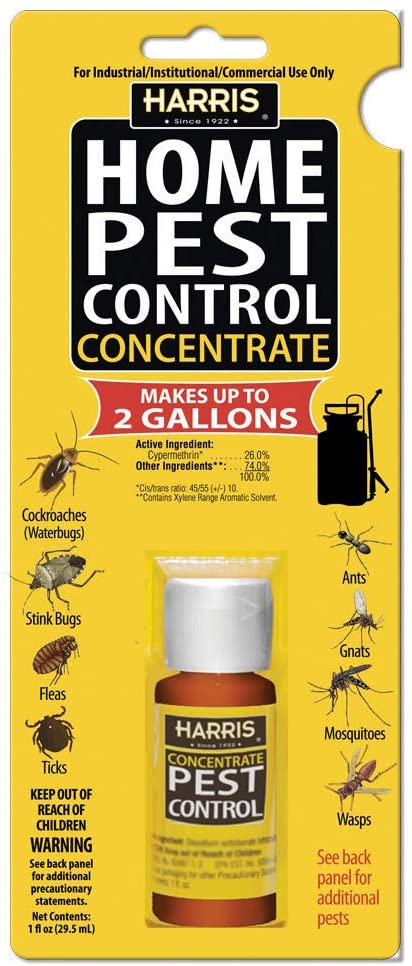High Quality A1 Pest Control Services Charlotte - Secure Your Home
High Quality A1 Pest Control Services Charlotte - Secure Your Home
Blog Article
Bed Bug Treatment Breakdown: Contrasting Chemical Vs. Non-Chemical Solutions
In the realm of pest control, particularly when managing the persistent concern of bed bugs, the option in between chemical and non-chemical therapy remedies can be a pivotal one. Both approaches offer distinctive benefits and downsides, influencing aspects such as performance, safety considerations, and general cost. By examining the nuanced details of each technique, a more clear understanding of which course to go after in resolving a bed bug infestation can be obtained.
Effectiveness of Chemical Treatments
Chemical therapies for bed insect invasions have been widely recognized for their potent and fast efficacy in eliminating these pests. When considering the performance of chemical treatments, it is critical to comprehend that they can offer a fast and detailed option to a bed insect problem.
Moreover, chemical treatments have the benefit of providing recurring impacts, indicating that they can continue to remove bed insects also after the preliminary application. This recurring activity is particularly advantageous in combating any kind of prospective re-infestations. Additionally, the rapid action of chemical therapies can bring relief to people encountering serious bed pest invasions, permitting them to restore control of their home swiftly.
Safety And Security Issues With Chemical Solutions
One crucial facet that requires cautious factor to consider when making use of chemical services for bed pest therapy is guaranteeing the security of occupants and the setting. Exposure to certain chemicals used in bed pest therapies can lead to breathing issues, skin irritability, or other adverse responses, especially in people with pre-existing conditions or sensitivities.
Moreover, the ecological impact of chemical options is one more substantial consideration. Some chemicals used in bed pest treatments may be hazardous to beneficial insects, wildlife, and communities if they seep right into the dirt or water supply. It is necessary to make use of chemical treatments deliberately, following safety guidelines, and taking into consideration less hazardous choices to minimize these dangers and ensure the reliable and safe management of bed pest infestations.
Benefits of Non-Chemical Techniques
Considering the potential safety worries and environmental impact associated with chemical services for bed pest therapy, exploring non-chemical methods offers an encouraging option with several distinctive benefits. Non-chemical therapies are eco friendly, as they do not contribute to air or water pollution, making them a sustainable selection for insect control.
In addition, non-chemical solutions can be efficient in targeting bed bugs, consisting of hard-to-reach locations where chemical treatments might not penetrate. Methods such as warm treatment, vacuuming, steam cleansing, and mattress encasements provide detailed removal without making use of damaging chemicals. In addition, non-chemical strategies can be much less turbulent, needing very little preparation and allowing for quicker reentry right into dealt with locations. In general, choosing non-chemical bed bug therapy methods not just prioritizes security and environmental management yet additionally makes certain reliable and comprehensive pest control.
Limitations of Non-Chemical Treatments

Furthermore, non-chemical treatments typically need several applications to achieve effective obliteration. This can be taxing and might not constantly assure full removal of all bed insects and their eggs, especially in hard-to-reach or hidden places.
Additionally, the success check here of non-chemical therapies heavily counts Going Here on correct application and thoroughness, which can be challenging for individuals without specialist proficiency. Insufficient application of non-chemical techniques might cause insufficient removal, causing persistent invasions and the demand for additional treatments.
Consequently, while non-chemical treatments have their benefits, it is essential to recognize these restrictions and consider them when identifying the most reliable strategy for handling bed insect infestations.
Cost Contrast: Chemical Vs. Non-Chemical Options
Given the limitations associated with non-chemical treatments, a necessary facet to examine in the context of bed pest monitoring is the price comparison between chemical and non-chemical choices. Chemical therapies usually involve the application of insecticides by professionals, which can vary from $250 to $900 per area, depending upon the intensity of the problem and the dimension of the location to be treated. In contrast, non-chemical therapies like warmth treatment or vapor can be a lot more costly, with expenses varying from $1,000 to $6,000 for an entire home. While the preliminary cost of chemical therapies might appear lower, several treatments may be needed to fully eradicate the problem, possibly boosting the general expense. On the other hand, non-chemical choices may offer an extra sustainable and green option, although they can be cost-prohibitive for some people. Eventually, when taking into consideration the price of bed insect treatment alternatives, it is essential to weigh the in advance expenditures against the efficiency and long-lasting sustainability of the picked approach.
Conclusion

Considering the possible safety worries and ecological influence associated with chemical remedies for bed insect therapy, discovering non-chemical strategies provides an encouraging option with a number of unique benefits.Provided the constraints linked with non-chemical treatments, a crucial facet to assess in the context of bed insect monitoring is the cost comparison in between chemical and non-chemical alternatives. In contrast, non-chemical therapies like heat treatment or vapor can be extra pricey, with expenses ranging from $1,000 to $6,000 for a whole home. While the preliminary advice expense of chemical treatments might appear lower, numerous treatments might be called for to completely eradicate the infestation, potentially increasing the overall price.In verdict, when contrasting chemical and non-chemical bed pest therapy choices, it is essential to consider effectiveness, safety, advantages, limitations, and cost.
Report this page